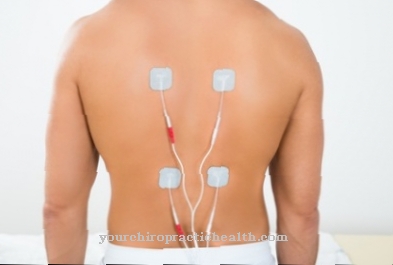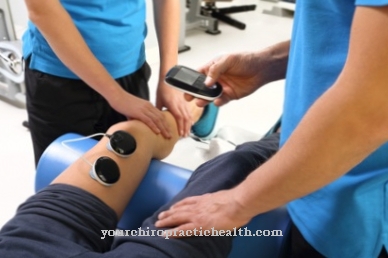A Long-term ECG records a so-called electrocardiogram over a long period of time to determine whether there are disorders or more serious diseases of the heart. It is used, for example, to detect or monitor cardiac arrhythmias or other possible heart diseases.
What is Holter ECG?

A Long-term ECG works like a normal resting ECG. In both methods, the activity of the heart is displayed in a waveform in order to check and assess the heart function. The electrical impulses of each heartbeat are derived and recorded.
The long-term ECG is recorded using a very small device that can be worn on the body and is connected to the patient via electrodes and cables. This device has an electronic data memory on which cardiac activities are usually recorded over a period of 24 hours. After the long-term ECG, the results are then read on the computer and evaluated by the doctor.
The curve of the long-term ECG can be seen on the screen or on the printout, the various areas of which can each be assigned to a section of the cardiac excitation, i.e. the different heart regions. The long-term ECG is a basic diagnostic method and is used particularly by internists. It enables a precise diagnosis and has hardly any risks.
Function, effect & goals
A Long-term ECG is used to check daytime and nocturnal fluctuations in heart function over at least 18 hours, but usually 24 hours. In contrast to this, the resting ECG is used for a momentary examination lasting only 5-10 minutes, and an exercise ECG during physical exertion (ergometer) takes 35-40 minutes.
The long-term ECG gives the doctor an overview of how the affected person's cardiac output changes during everyday activities and in different situations. This method is used for a more detailed examination and evaluation of a wide variety of heart disorders and heart diseases over a longer period of time. Above all, it makes sense to either prove or exclude possible cardiac arrhythmias in the event of symptoms such as palpitations, dizziness or fainting spells (syncope).
In arrhythmias, the heart beats either too slowly or too quickly. Since these disturbances sometimes only occur occasionally, they are not always recorded by a normal resting ECG.
A long-term ECG can help establish a connection between unclear physical symptoms and an irregular heart rhythm. With the long-term ECG, any dangerous circulatory disorders caused by narrowing of the coronary arteries can also be determined. These do not always cause pain, so they are "silent" (silent ischemia).
The long-term ECG is particularly useful as a diagnostic method for nocturnal heart disorders that the sleeping patient does not notice. It is of course also used to monitor heart function after a heart attack and after the implantation of a pacemaker.
With a long-term ECG, up to six electrodes are glued to the patient's body. These are in turn connected by cables to the long-term ECG device, from which the ECG is recorded in an electronic data memory. The cables are routed to the outside through the clothing, while the patient can either attach the device to a hip belt or wear it around his neck. In addition, the patient is asked to record his activities, physical observations and any complaints in a log during the long-term ECG.
The long-term ECG is then displayed on a screen using a special evaluation device. This is usually also printed out and then evaluated either automatically or by the doctor. Every heartbeat is checked for disturbances.
There are two types of Holter ECG machines. One is based on continuous recording, where every heartbeat is recorded, and the other is based on discontinuous recording, in which only cardiac arrhythmias are recorded.
You can find your medication here
➔ Medicines for cardiac arrhythmiasRisks & dangers
With a Long-term ECG there are no complications associated with it and it is virtually risk-free. After an initially unfamiliar sensation because of the cables and electrodes attached to the body, they are hardly noticed during the day. However, this equipment can be a bit of a nuisance during the night. In addition, a cable may come loose from the splice, which interrupts the recording.
Only occasionally may an itchy rash occur where the electrodes are attached. The long-term ECG device should not be worn at workplaces where there is a risk of flammable gases escaping and thus a risk of explosion.













.jpg)

.jpg)
.jpg)











.jpg)